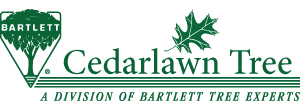Repairing Damaged Lawns
If your lawn requires repair in the fall be sure to evaluate the growing environment of the affected areas to avoid a repeat of this years problems. Examine for compacted soil or excessive thatch layers. Compacted soil may occur due to excessive foot or equipment traffic or passage by heavy vehicles, particularly during times when the ground is wet. Compacted soils generally exhibit poor turf growth and typically have a higher weed presence due to suboptimal turf growing conditions. Water may pool after rains if the compacted area is lower than the surrounding area due to restricted water infiltration capacity. The thatch layer (mixture of living/dead vegetative material) that exists at the interface of the soil and the grass blades should be ½” or less. Excessive thatch helps to encourage shallow rooting of turf that falls susceptible to drought stress during the heat of the summer. Poor growing conditions or turf management can lead to excessive thatch. More probably your turf may have thinned or died due to insect/disease related issues or simply heat or drought stress. An evaluation by a turf care professional can determine the cause(s) for your turf problems and prescribe an appropriate course of remedial action.

Figure 2 Soil with compost added has a darker color. Presence of soil particle aggregation indicates good soil structure.
Examine soil depth, texture, structure and organic matter content if turf repair is necessary. Turf needs at least 4-6” of good topsoil for long term survival and health. Inadequate topsoil depth limits the turfs ability to obtain nutrients and soil moisture. Turf lacking proper topsoil depth, particularily if it is a coarse-textured soil, will brown out early during droughty summer conditions. Instead of just going into summer dormancy the turf is often so stressed large areas die out due to the combination of heat and drought stress. The thinner your topsoil depth the more important soil texture and structure become. Soils that are too coarse-textured (sandy) or lack proper soil structure (binding together of soil particles) may need ammending. Ammending soils during lawn repair can allow the addition of a greater quantity of soil ammendments than are possible simply by topdressing a healthy lawn. The addition of compost or composted loam (if the organic matter content of your soil is low) or hi-quality topsoil can improve moisture and nutrient-holding capacity of your soil. This will help your turf stand up better to biotic and environment stresses. Compost increases the organic matter content of soils and helps stimulate microbial and biological activity. Organic matter will increase moisture & nutrient retention in corase-textured soils and help compacted or poor-draining soils begin to restore proper soil structure.





